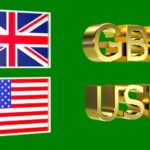Gold Retreats Despite Brief Rebound, Struggles to Maintain Traction Above $3,200
Gold (XAUUSD) prices came under renewed selling pressure during Friday’s early European trading hours, paring a portion of Thursday’s rebound from a monthly low of around $3,120. The precious metal’s inability to hold onto gains signals a fragile recovery, undermined by diminishing safe-haven flows amid improving global trade sentiment.
As of writing, gold remains under mild pressure but is still holding slightly above the critical psychological threshold of $3,200. While optimism around a US-China trade truce weighs on the non-yielding yellow metal, other macroeconomic and geopolitical developments continue to provide an undercurrent of support.
US-China Trade Truce Cools Market Nerves, Pressures Gold’s Appeal
The major headline driving the markets this week is the 90-day pause in the US-China trade standoff. Both economic giants have agreed to significantly reduce tariffs and resume negotiations aimed at reaching a broader trade agreement. This development has sparked risk-on sentiment, pushing investors toward riskier assets and reducing the demand for traditional safe havens like gold.
US President Donald Trump further added to the trade optimism by hinting at parallel discussions with other strategic Asian partners, including Japan, India, and South Korea. The de-escalation of trade tensions diminishes the fear-driven bid that often supports gold prices during periods of global uncertainty.
Peace Talks in Istanbul, But No Breakthrough Yet
In another geopolitical twist, representatives from the US, Russia, and Ukraine have convened in Istanbul for the first direct peace talks in three years. Despite the historic meeting, Russian President Vladimir Putin’s absence cast a long shadow, reducing expectations for any substantive progress.
While the negotiations offer a glimmer of hope for diplomatic resolution, the lack of any breakthrough keeps geopolitical risks simmering in the background. Investors remain cautious, especially as Eastern Europe remains a potential flashpoint that could escalate quickly. This lingering uncertainty continues to act as a modest support pillar for gold.
Middle East Conflict Intensifies, Keeping Geopolitical Risk Alive
Meanwhile, violence in the Middle East surged once again as Israel intensified military operations across the Gaza Strip. Thursday’s renewed assault has led to the deaths of at least 143 Palestinians, adding to the regional instability. The humanitarian toll and rising tensions in the region maintain a degree of geopolitical risk that may prevent a sharp downside correction in gold prices.
While the conflict hasn’t sparked a full-scale rush into safe havens, it does contribute to a risk premium embedded in gold, limiting the potential for steep declines in the near term.
Fed Rate Cut Bets Weigh on Dollar, Boost Gold’s Floor
One of the most influential macro drivers this week has been a string of weaker-than-expected US economic data, reinforcing the market’s dovish stance on Federal Reserve policy. Thursday’s release of the US Producer Price Index (PPI) showed a surprising 0.5% drop in April, the first monthly decline in over a year. This adds to Tuesday’s softer-than-expected Consumer Price Index (CPI) reading, which came in at its lowest annual rate since early 2021.
The back-to-back soft inflation prints are feeding speculation that the Fed may deliver at least two rate cuts before the end of 2025. As a result, US Treasury yields have tumbled sharply, dragging the US Dollar lower for the second consecutive session. This USD softness is a tailwind for gold, which is priced in dollars and tends to rise when the greenback weakens.
US Retail Sales Offer Mixed Signals, Growth Concerns Linger
In a separate report, the US Department of Commerce noted that Retail Sales grew a meager 0.1% in April, far below March’s revised 1.7% gain. While not negative, the modest growth underscores the narrative of slowing consumer momentum. With inflation cooling and economic data pointing toward stagnation, the case for Fed rate cuts gains further credibility.
For gold, this macroeconomic backdrop offers a counterbalance to the bearish impact of reduced geopolitical tensions. The weaker growth outlook and expectations of easier monetary policy make the precious metal an attractive hedge against potential future volatility and dollar depreciation.
Weekly Outlook: Gold Set for Losses Despite Cushion from Soft USD
Despite Friday’s relative stability, the overall weekly performance for gold remains firmly in negative territory. After reaching as low as $3,120 mid-week, the recovery has been mild and lacks the bullish conviction required for a sustained breakout above recent highs.
Traders are keeping a close eye on further developments in the US-China negotiations, the Istanbul peace talks, and the ongoing situation in Gaza. In the absence of major geopolitical flare-ups or fresh economic shocks, gold could remain vulnerable to risk-on flows and continued liquidation from speculative longs.
However, any signs of fresh instability or significantly dovish Fed commentary could quickly revive bullish interest.
Technical Analysis: Key Levels to Watch
From a technical standpoint, gold faces immediate resistance around the $3,230–$3,240 region, which coincides with the 50-day moving average and previous support-turned-resistance levels. A sustained break above this zone could open the door for a retest of $3,275 and beyond.
On the downside, the $3,200 mark remains a crucial psychological and technical support. A decisive break below it could expose gold to a deeper retracement toward the $3,160–$3,120 support zone, last seen in early April.
Momentum indicators like RSI and MACD suggest a neutral-to-bearish bias in the short term, with gold prices likely to trade in a range unless driven by strong external catalysts.







